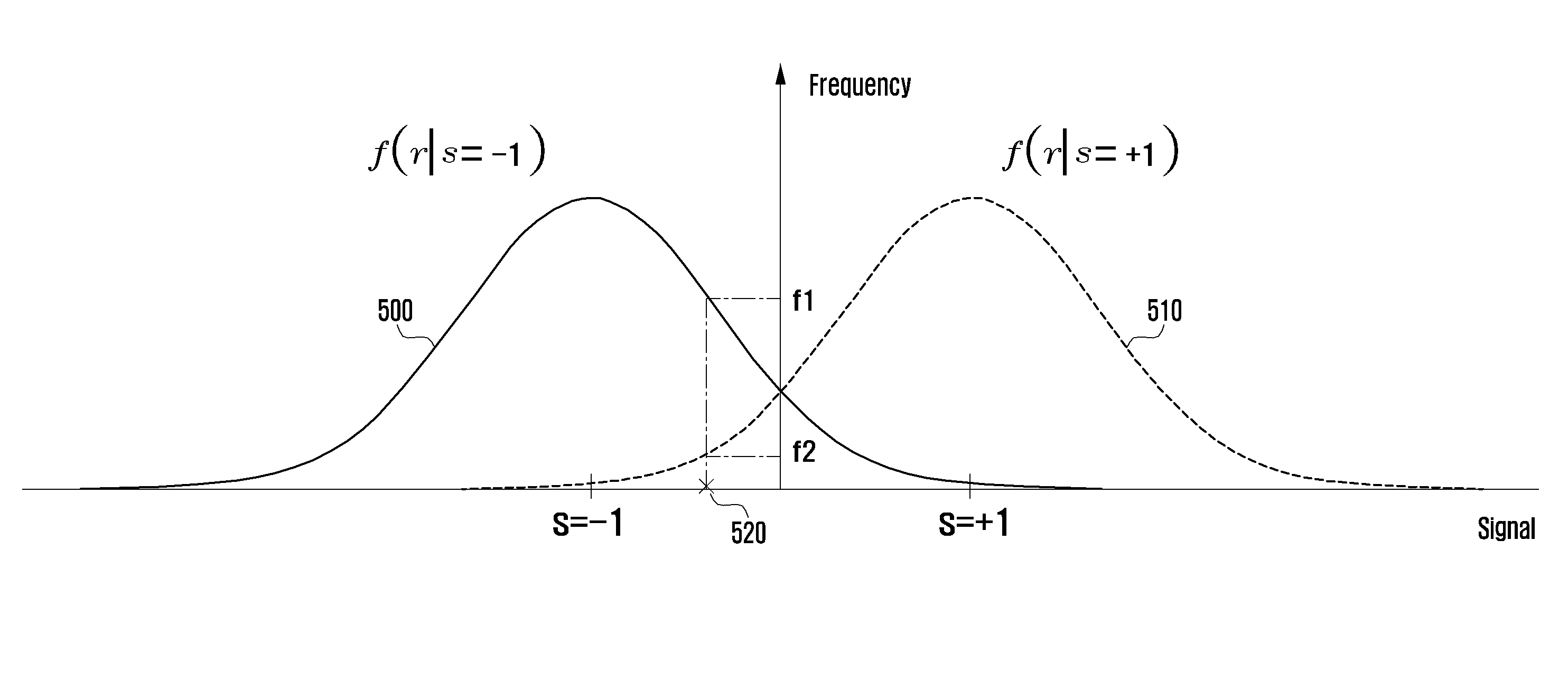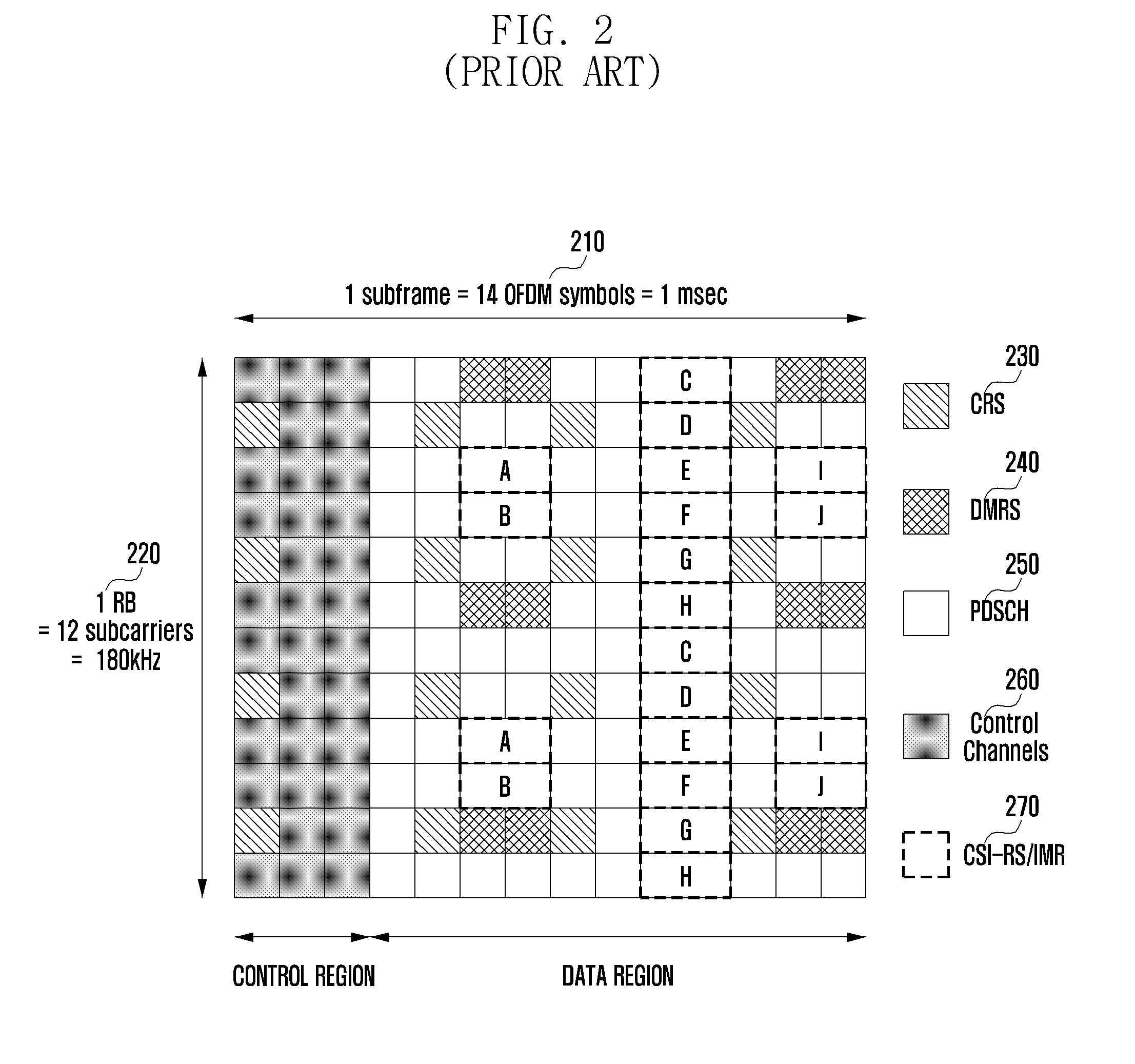Method and apparatus for controlling interference in wireless communication system
a wireless communication system and interference control technology, applied in the direction of transmission monitoring, orthogonal multiplex, wireless commuication services, etc., can solve the problems of inability to apply to one pattern partially, inability to effectively cancel interference, and radio signals transmitted to different receivers on the same time-frequency resource are likely to interfere with each other
- Summary
- Abstract
- Description
- Claims
- Application Information
AI Technical Summary
Benefits of technology
Problems solved by technology
Method used
Image
Examples
first embodiment
[0119]In the OFDM system, if the eNB transmits reference signals of x(0), x(1), . . . , x(N−1) through N different subcarriers and if the UE receives signals of Y(0), Y(1), . . . , Y(N−1) through N subcarriers, the received signals may be expressed as a matrix represented by Equation (4).
Y=X H+ V (4)
[0120]Here, Y=[Y(0), . . . , Y(N−1)]T and X=diag(x(0), . . . , x(N−1)) are diagonal matrices having x(n−1) as nth diagonal components, and H=[H(0), . . . , H(N−1)]T whose components denote channel values of individual subcarriers between the eNB and UE. V=[V(0), . . . , V(N−1)]T and each component can be modeled as a probability variable having independent Gaussian distribution as the reception noise of the UE.
[0121]Using a channel estimator, the UE estimates channel value per subcarrier H with the received signal and a known reference signal value. Least Square (LS) and Minimum Mean Square Error (MMSE) are representative channel estimation methods. The LS channel estimation method is ...
second embodiment
[0143]In the second embodiment of the present invention, the information on the CRS configured as QCL of DMRS for interference is unlike the first embodiment. In this case, there is no need of allocating extra CSI-RS resources for extracting statistical characteristics of the interference channel to the UE as compared to the first embodiment. That is, when receiving specific PDSCH scheduling, the information on CRS for extracting statistical characteristics of the channel other than CSI-RS for channel estimation of DMRS corresponding to the interference is transmitted.
[0144]FIG. 12 is a flowchart illustrating the interference information determination procedure of the UE according to the second embodiment of the present invention.
[0145]Referring to FIG. 12, the UE checks the mapping of the downlink control information value corresponding to QCL information of DMRS and CRS for interference and the CRS resource information through RRC information at step 1210. Here, the CRS resource i...
third embodiment
[0154]In the third embodiment of the present invention, a method of notifying information on the REs of the interferer cell to which IAD is applied is added to the method of configuring QCL necessary for estimating the channel of DMRS for interferences that is provided in the first and second embodiments. The third embodiment may be implemented independently of the first and second embodiments.
[0155]Since the cell incurring the interference component is not clear, it is difficult for the UE to check whether the data modulated in a specific modulation scheme or CRS is mapped to specific a time-frequency resource for the interference. Also, it is not clear whether a specific time-frequency resource is allocated for PDSCH or PDCCH for the interference. When IAD is applied, it is necessary for the eNB to send the UE the resource mapping information of the cell incurring interference in addition to CRS or CSI-RS information for extracting statistical characteristics for estimating DMRS.
[...
PUM
 Login to View More
Login to View More Abstract
Description
Claims
Application Information
 Login to View More
Login to View More - R&D
- Intellectual Property
- Life Sciences
- Materials
- Tech Scout
- Unparalleled Data Quality
- Higher Quality Content
- 60% Fewer Hallucinations
Browse by: Latest US Patents, China's latest patents, Technical Efficacy Thesaurus, Application Domain, Technology Topic, Popular Technical Reports.
© 2025 PatSnap. All rights reserved.Legal|Privacy policy|Modern Slavery Act Transparency Statement|Sitemap|About US| Contact US: help@patsnap.com



